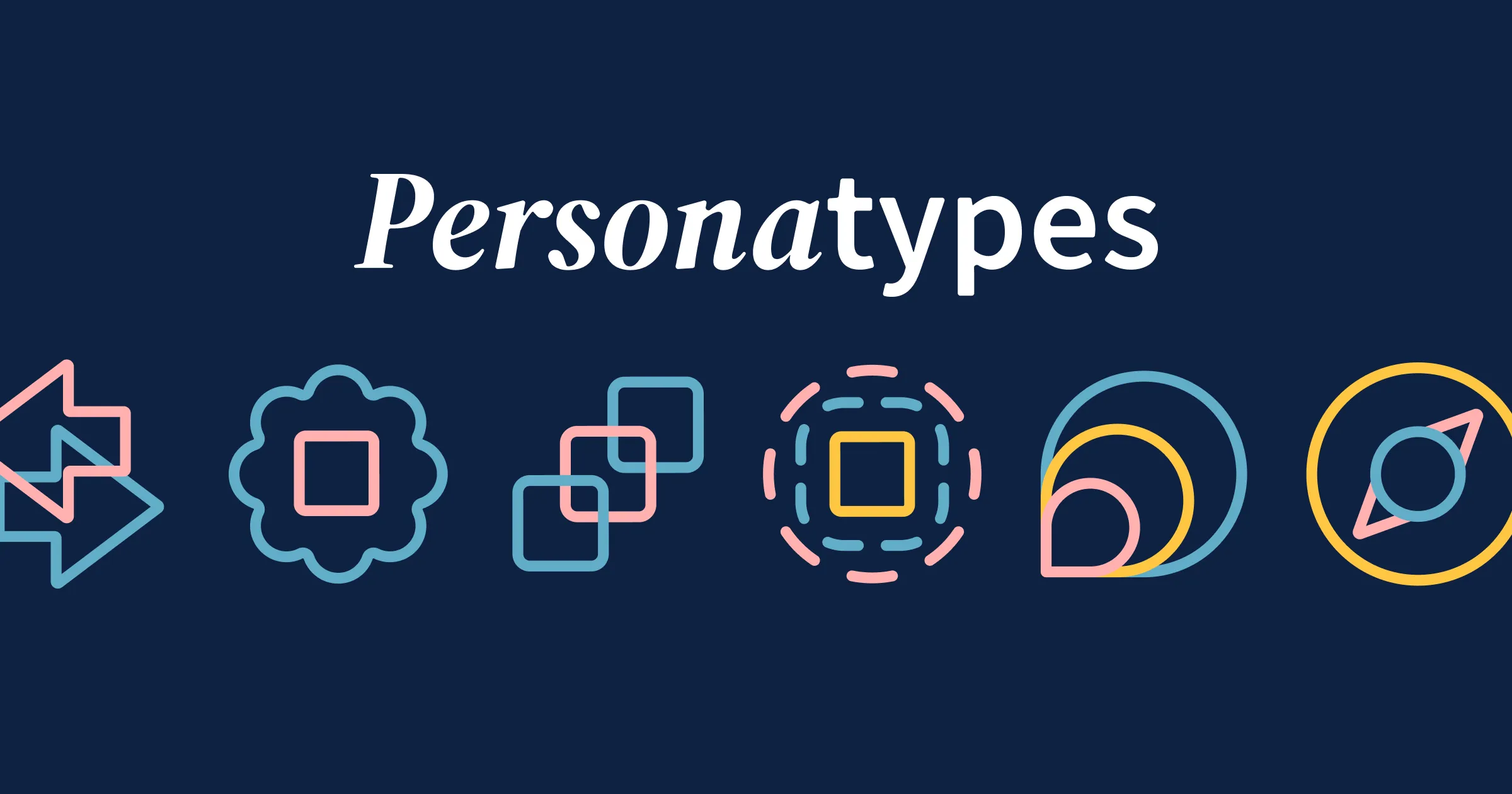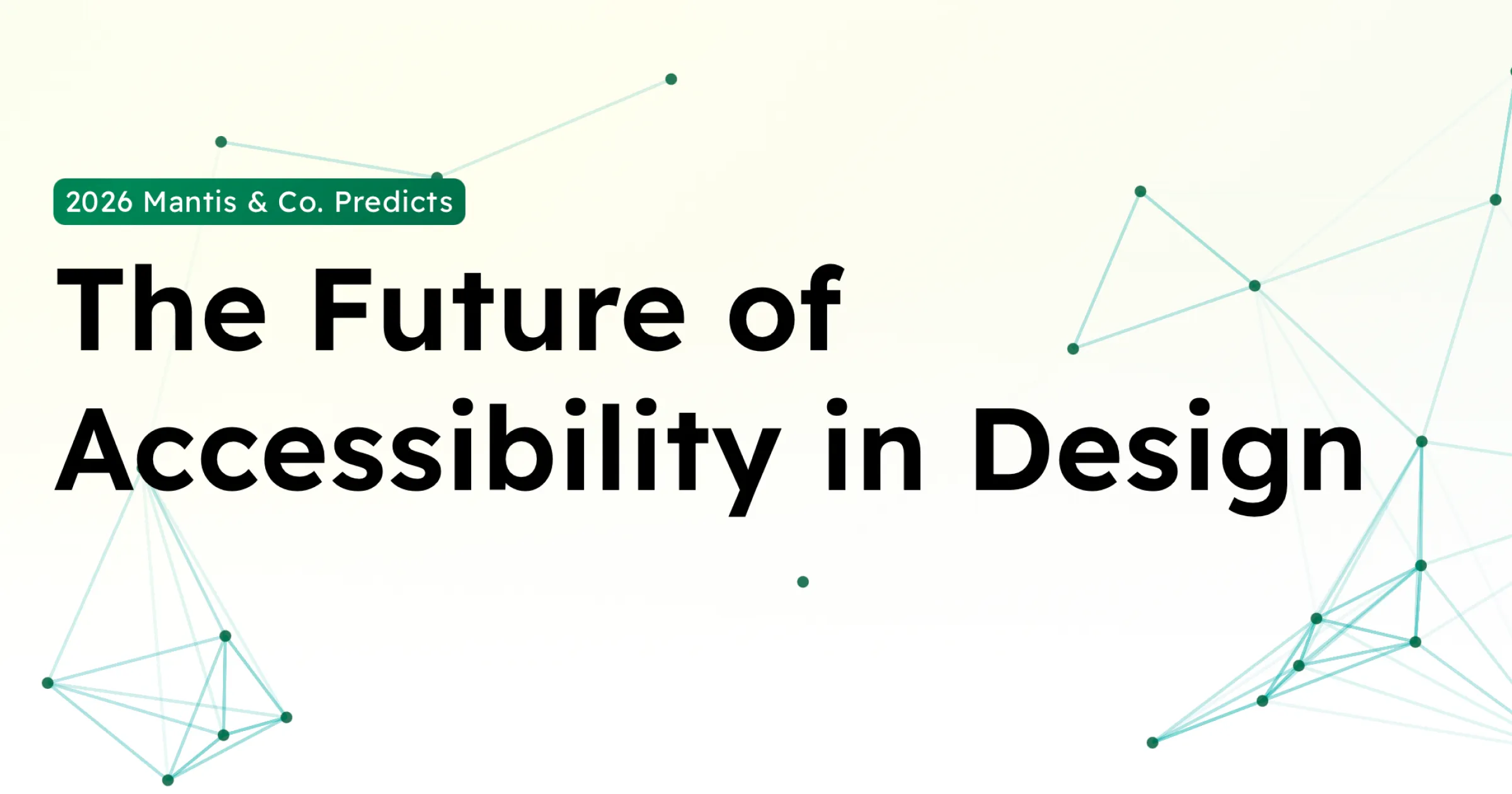I’ve experienced both the joy and the challenge of navigating design spaces as someone with low vision. I’m legally blind, I have ADHD, and I bring a trauma-informed lens to everything I do.
One thing that’s always given me pause is how disability tends to show up in user personas. Too often, it’s tacked on as an afterthought or flattened into a single bullet point to check an inclusion box, completely missing the complexity that makes our community so vibrant and nuanced. In my life, I’ve never been just a person with low vision. I don’t set aside my ADHD when I turn on VoiceOver, and I can’t step outside of my trauma-informed perspective to navigate inaccessible systems. Personatypes are my response to that lived complexity. This framework builds on the work of many others and aims to deepen how we think about inclusive design as both a practice and a mindset.
In this article, I’ll introduce what Personatypes are, explain the Disability Characteristics Model that informs them, and walk through examples you can use in your own design practice.
What Are Personatypes?
Personatypes are flexible, experience-based profiles developed from lived disability experience and accessibility-focused UX research. The name blends “persona” and “archetype,” reflecting their dual role as familiar design tools and deeper pattern identifiers. Unlike traditional personas, which often tokenize or flatten disability (or other identities), Personatypes represent dynamic patterns of access needs, interactions, and values. They help design, content, and research teams build digital systems that more mindfully meet human needs.
Traditional personas tend to focus on goals, roles, or demographics. When it comes to disability, that approach falls short. Disability is rarely a single static attribute. It’s contextual, evolving, and shaped by systems, energy, barriers, access to resources, and so many other dimensions. Personatypes are built to reflect that reality.
Each Personatype draws from real patterns and combinations of friction, creative workarounds, hacks and experiences I’ve observed through work, friendship, and community. Factors like trauma sensitivity, energy management, or misaligned assumptions often don’t show up in traditional UX documentation, but they profoundly shape how people navigate the world.
The composition of a Personatype
In practice, a Personatype profile can capture details such as:
- Recurring barriers and friction points (for example, common accessibility issues encountered in certain contexts or combinations)
- Assistive technology use and interaction preferences (like screen reader navigation strategies or voice input vs. text preference)
- Responses and workarounds due to inaccessibility (including fatigue, creativity, and abandonment)
- Personal values, motivations, and systemic factors that influence how someone approaches technology (such as advocacy mindset or trust in systems)
Importantly, Personatypes are not one-to-one representations of specific individuals or diagnoses. They are human-centered tools, grounded in community knowledge, designed to surface often-overlooked experiences in your design process. Used alongside direct research and co-design with disabled people, Personatypes can help teams ask better questions, make more informed decisions, and design with dignity in mind.
To create the Personatypes, I developed a Disability Characteristics Model, a set of key dimensions that help break down the facets of disability experience. This model provides a foundation for understanding how different factors combine and influence access needs.
The Disability Characteristics Model
The Disability Characteristics Model outlines several spectrums that describe how disability can be experienced. While not exhaustive, these characteristics support deeper thinking about how different factors shape a person’s interactions with technology and environment. As someone who navigates access every day, I find these spectrums provide a language for common patterns without requiring me (or others) to constantly share personal medical details, which can be exhausting.
The model outlines key dimensions of disability experience, such as whether a disability is permanent or temporary, static or changing over time, visible or non-apparent to others, and present from birth or acquired later in life. It also considers how fast the onset is (sudden or gradual), how frequently the person encounters barriers (from occasional to frequent), their levels of fatigue and trauma sensitivity, how common or rare the condition is, their access to support or assistive tools, and even their cognitive style (from literal to abstract). These characteristics are not inherently good or bad; they simply help map out a person’s access needs and context, giving us a more nuanced lens for design.
Meet the Personatypes
 The Lifelong Expert
The Lifelong Expert
(Permanent | Congenital | Static | High Support Access)
A user who has been disabled all their life and is deeply experienced with assistive technology. They’re often more proficient than the people designing the product, and they get annoyed with designs that ignore standard accessibility conventions or slow them down. Design tip: Provide configurability and efficient shortcuts, and avoid unnecessary hand-holding. Design to empower expert users.
 The Adaptive Rebuilder
The Adaptive Rebuilder
(Acquired | Dynamic | Gradual or Sudden Onset | High Support Access)
Someone adapting to a new or evolving disability. They may be grieving abilities they lost, learning new tools, and feeling frustration as they rebuild their routines and identity. Design tip: Use an empathetic, non-patronizing tone. Normalize changing needs and provide features that help with transitions (like saving progress or adjustable difficulty). Keep interfaces consistent to reduce the re-learning curve.
 The Temporary Adapter
The Temporary Adapter
(Temporary | Apparent | Static or Dynamic | Low Support Access)
An individual with a short-term disability (like an injury) who needs immediate accommodation but isn’t familiar with assistive tech. They suddenly experience how much everyday design assumes full ability. Design tip: Make accessibility features obvious and easy to activate (no lengthy setup). Offer quick modes (one-handed use, voice control, high contrast) and timely guidance for users who might be struggling unexpectedly.
 The Energy Manager
The Energy Manager
(Dynamic or Static | High Fatigue | High Barrier Frequency)
A person dealing with fatigue or limited energy. They carefully budget their energy, and if using your product is too exhausting or lengthy, they’ll likely give up to conserve it. Design tip: Streamline workflows as much as possible. Reduce the number of steps for key tasks, provide shortcuts for frequent actions, and allow users to save their progress and return later so they’re not forced to finish in one go.
 The Sensitive Navigator
The Sensitive Navigator
(Permanent or Acquired | Dynamic | High Trauma Sensitivity | Dynamic)
An individual who is sensitive to emotional, sensory, or psychological risk. If an interface feels coercive, confusing, or unsafe, they will disengage quickly for self-protection. Design tip: Design for transparency and control. Clearly explain what’s happening, avoid any “no exit” flows, and let users opt out or undo actions. Use gentle, affirming language and avoid flashy or overwhelming effects that could startle or distress.
Other Personatypes include The Systems Thinker (a user who views access issues as a systemic problem and often advocates for broader change), The Gentle Observer (someone with a non-apparent disability who notices barriers early), The Steady Processor (who prefers clear, literal information and step-by-step flows), The Misread Signal (who has an uncommon disability that leads others to misinterpret their needs), and The Internal Adapter (often new to disability and reluctant to disclose or seek help). Each of these profiles highlights different challenges and perspectives that can inform design decisions.
Why Personatypes Are Different
Most personas were never designed to hold the complexity of disability. They often reduce a person’s needs to a single trait (e.g. “has low vision, uses a screen magnifier”) without context, emotion, or acknowledging systemic factors. This simplistic approach can lead to tokenism or false confidence that “we’ve covered accessibility” when in reality we’ve barely scratched the surface.
Personatypes were created to fill that gap. Rather than centering on demographics or job roles, they surface patterns shaped by energy, resilience, trauma, ingenuity, and the surrounding environment. They reflect how a wider spectrum of people engage with technology.
In summary, Personatypes can:
- Provide more nuanced insight into disabled user experiences that typical personas miss.
- Reflect recurring interaction patterns with systems and environments (not just one-off anecdotes).
- Center the user’s values, strengths, and workarounds, not just their medical conditions or a list of assistive tools.
- Inspire design decisions that proactively reduce harm and increase access for many users.
It’s important to note that Personatypes are not a replacement for working directly with disabled people in your design process. No framework is a substitute for real engagement, hiring disabled talent, or co-design. Think of Personatypes as a way to ask better questions and to challenge your team’s assumptions earlier, so that when you do involve users, you’ve already addressed some obvious pitfalls and can focus on deeper insights.
How to Use Personatypes in Your Design Workflow
Personatypes are a tool to help teams move beyond basic compliance checklists and toward building digital systems that affirm dignity, autonomy, and belonging. Here are a few key ways to put Personatypes into practice in your work:
- Strategy & Research: Incorporate Personatypes in early-stage work like journey mapping, service design, and user research synthesis. They help teams spot potential access barriers and patterns of friction from the start, and guide decisions about which features to prioritize for maximum inclusion.
- Design & Development: Use Personatypes as a heuristic during design and prototyping. Step through wireframes or user flows as one of these personas to catch issues. During design reviews and pre-launch testing, this practice can reveal usability gaps before you release a product.
- Workshops & Training: Include Personatypes in design thinking workshops, hackathons, or accessibility training sessions. Teams can role-play scenarios or brainstorm solutions with a specific Personatype in mind, which builds empathy and often uncovers innovative ideas. Using Personatypes in cross-functional groups also helps everyone develop a shared language around accessibility needs.
Thinking more deeply about human need
Across these use cases, the strength of Personatypes is in prompting reflection. They help teams pause and ask:
- “Who might we be unintentionally excluding here?”
- “What patterns of access or friction could emerge that we haven’t considered?”
- “Are we only designing for what’s easy to see or name, and missing what’s less visible?”
By asking these questions early and often, Personatypes move us from treating certain users as edge cases to recognizing them as part of the core audience that our designs should serve.
Conclusion: Designing Toward Dignity
Personatypes aren’t a checklist or a shortcut, they’re an invitation to think more deeply and notice what we might otherwise overlook. By considering these profiles, we start to design for disability not as an edge case, but as a source of insight and innovation.
This framework comes from lived experience, research, and community knowledge. It’s rooted in the belief that good design should affirm the full humanity of its users. When we design for access and dignity, we create better experiences for everyone.
If Personatypes help you pause before launching a feature, reframe a test, or advocate for a more inclusive solution, then they’re doing their job. They are not a replacement for co-designing with disabled people or hiring disabled talent, but a starting point—a way to prime your design process with empathy and foresight.
Disabled professionals remain underrepresented in design settings, so many products are still built without our perspectives. Until that changes, tools like Personatypes can help keep disability centered in the conversation. I hope this framework brings us a step closer to experiences that include us, reflect us, and make room for all of who we are.
Acknowledgments and Influences
Personatypes was shaped by lived experience and the work of others. I’m especially grateful to Kathleen R. Bogart, PhD, whose research on disability dimensions like support systems and onset directly informed the Disability Characteristics Model.
I also drew from foundational resources including Microsoft’s Inclusive Design Toolkit, the UK Government’s Persona Spectrum Cards, and spectrum-based work from Stanford’s d.school. These resources serve as important foundations from which we can build.
And finally, this work would not have been possible without the review, feedback, experience and expertise of Becca Lory Hector, Kathleen Bogart, PhD, Dr. Annalise Ophelian, PsyD and numerous others whose support and contributions are reflected in this work. Thank you!
References
- Bogart, K. R. (2024). 8 Dimensions of Disability. Psychology Today.
https://www.psychologytoday.com/us/blog/disability-is-diversity/202410/8-dimensions-of-disability - Microsoft Design. Inclusive Design Toolkit.
https://www.microsoft.com/design/inclusive - UK Government Digital Service. Accessibility Persona Spectrum Cards.
https://accessibility-personas.info - Stanford d.school. Design for Extreme Affordability (persona spectrum approach in design education).
https://extreme.stanford.edu
Stay tuned: Personatypes Toolkit and other resources are in the works. Have feedback about how these work in practice? We’d love to hear from you at hello@mantisandco.com
© 2025 Mantis & Co. LLC All rights reserved. Personatypes is a trademark of Mantis & Co.


